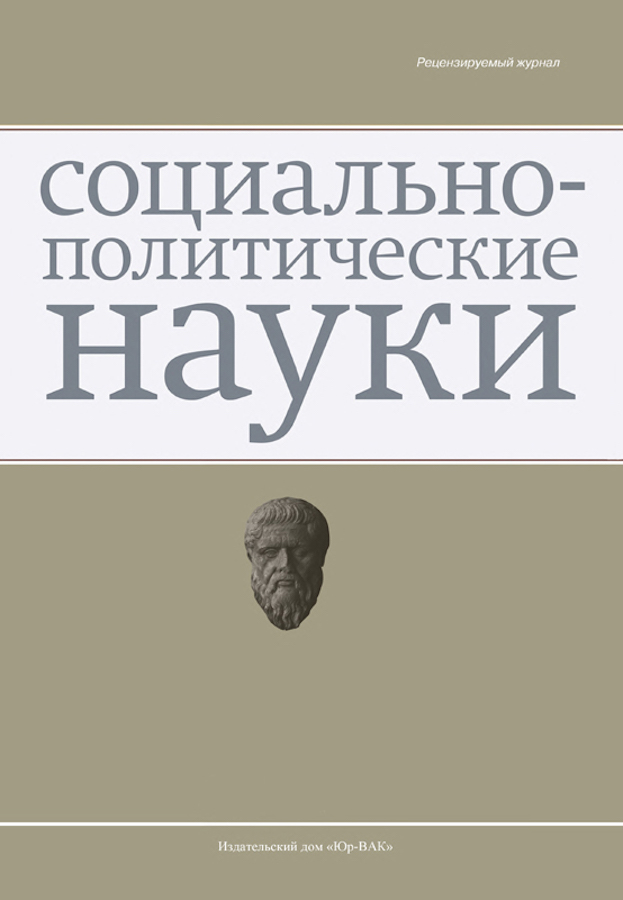Youth slang as a social phenomenon
- Авторлар: Goryacheva O.N.1
-
Мекемелер:
- Naberezhnochelninsk Institute of Kazan Federal University
- Шығарылым: Том 13, № 2 (2023)
- Беттер: 51-54
- Бөлім: Theory, Methodology, and History of Sociology
- URL: https://journals.eco-vector.com/2223-0092/article/view/516495
- DOI: https://doi.org/10.33693/2223-0092-2023-13-2-44-50
- ID: 516495
Дәйексөз келтіру
Аннотация
The article is devoted to youth slang as a social phenomenon, taking into account the traditional linguistic approach. The main results of the study are related to the study of youth slang and the reasons motivating young people to use slang in communication with each other. In this regard, youth slang has some similarities with argot – the language of socially closed group of people, but with cardinal differences: slang does not have the original purpose of separation from the rest of society and conspiracy, does not “close” the social group – these processes are secondary, not expressed in the same extent and are a consequence of the phenomenon of intragroup favoritism, also youth slang has a much greater number of speakers than any argot language. The application of analytical method in the study of slang as a social phenomenon on the material obtained from the sociological survey of students allowed to determine the role and place of slang in the life of young people. Thus, based on the data obtained as a result of the survey, it is possible to talk about a high degree of integration of youth slang into the student environment. The social dialect under consideration has become a natural language for the majority of the youth social group. The obtained data and the conclusions made on them are confirmed by the provisions in the theoretical part, and determine the general trends associated with the development of youth slang.
Негізгі сөздер
Толық мәтін
Авторлар туралы
Olga Goryacheva
Naberezhnochelninsk Institute of Kazan Federal University
Хат алмасуға жауапты Автор.
Email: olganikgor@mail.ru
ORCID iD: 0000-0002-1156-9679
Scopus Author ID: 56296843600
ResearcherId: N-8280-2015
Candidate of Philology, Associate Professor; associate professor at the Department of Socio-Humanitarian Sciences of the Naberezhnochelninsk Institute of Kazan Federal University. Naberezhnye Chelny, Russian Federation.
Ресей, Naberezhnye ChelnyӘдебиет тізімі
- Artemenko S.Yu., Gareeva L.M. Platform “TikTok” as one of the sources of modern youth slang. Humanities and Education. 2022. Vol. 13. No. 1 (49). Pp. 128–132. (In Rus.)
- Berdigulova N.A. Youth slang. El agartuu. 2020. No. 3-4. P. 39. (In Rus.)
- Berhamova J.B. Youth slang as a peculiar way of self-expression (on the example of French slang). New Science: Current State and Ways of Development. 2015. No. 6-3. Pp. 92–98. (In Rus.)
- Gareeva L.M. Modern youth slang: its sources and varieties. International Research Journal. 2021. No. 9. Part 3. Pp. 129–130. (In Rus.)
- Davydova O.P. Youth slang in the social web: about the causes of use. Bulletin of Modern Studies. 2018. No. 11.1 (26). Pp. 28–30. (In Rus.)
- Kaverina L.V. Youth slang as a linguistic phenomenon in modern linguistics. Bulletin of the Belgorod Law Institute of the Ministry of Internal Affairs of Russia. 2008. No. 2. Pp. 41–43. (In Rus.)
- Kasumova M.Yu. Youth slang as a component of youth discourse. Actual Problems of Humanities and Natural Sciences. 2019. No. 7. Pp. 63–65. (In Rus.)
- Kulakova K.V. Youth slang as a reflection of modern reality (on the example of German). Bulletin of the Baltic Federal University named after I. Kant. Series: Philology, Pedagogy, Psychology. 2019. No. 4. Pp. 23–30. (In Rus.)
- Mizyurina T.V. Definition and general characteristics of the concept of “slang”, its role in the language and culture of modern Russia. Bulletin of Chelyabinsk State University. 2017. No. 1 (292). Pp. 106–111. (In Rus.)
- Pellikh I.V. Youth slang as a social variety of speech. Bulletin of Adygeyan State University. Series 2: Philology and Art Criticism. 2008. No. 1. Pp. 106–108. (In Rus.)
- Rubtsova E.A. Youth slang as a controversial phenomenon in modern linguistics. Bulletin of Peoples’ Friendship University of Russia. Series: Russian and Foreign Languages and the Methods of Their Teaching. 2009. No. 1. Pp. 19–25. (In Rus.)
- Tajdinova A.F. Korean youth slang as a social dialect. Innovation. Science. Education. 2021. No. 33. Pp. 957–59. (In Rus.)
- Goryacheva O., Kalinina G. The manipulative capacity of mass media. Humanities & Social Sciences Reviews. 2019. Vol. 7. No. 6. Рp. 491–494.
Қосымша файлдар








